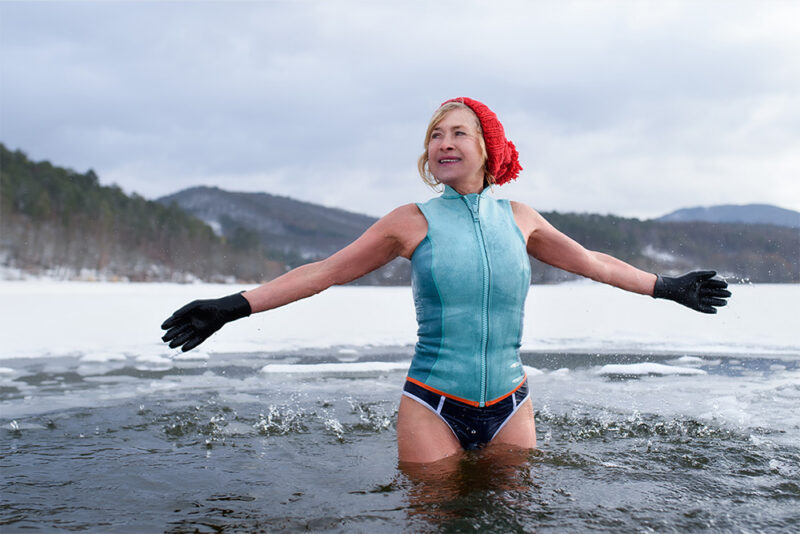What is hydrotherapy?
Using water to cure ailments and diseases has been around since the beginning of recorded history. However, in the last 20 years, medical experts have started seriously studying hydrotherapy as a treatment for some conditions and symptoms. Studies have found that hydrotherapy can be a great option to alleviate issues like muscle pain and joint stiffness.
There are many types of hydrotherapy, some examples include:
- Aquatic Exercise
- Aquatic Physical Therapy
- Warm Water Baths
- Sitz Baths
- Saunas
- Immersion Therapies
Different types of immersion therapies
Immersion therapies are just as they sound – immersing yourself in water for relief of pain, relaxation, recovery from workouts, and help with many other conditions. Two of the most popular types of immersion therapies are ice baths and contrast water therapy.
What are ice baths?
You’ve likely seen videos on IG or Facebook of people plunging into ice baths, freezing bodies of water, or even cold showers and wondered – why? Although it might seem like a foolish thing to do, ice baths can be used to manage diseases, promote a healthy body, and recover from workouts.
Ice baths involve immersing yourself in cold water (50-59 degrees Fahrenheit) up to your neck or immersing a specific joint or area of the body. Ice baths are a popular option for cold water immersion because you can control the temperature. You also control the amount of time you’re in the ice bath, which shouldn’t exceed 10-15 minutes.
When is the Best Time to Take an Ice Bath?
The sooner you take an ice bath after a workout, the better. Bringing your core temperature down after a strenuous workout, or a workout in high heat or humidity, with an ice bath is advantageous. Exposing your muscles to cold water shortly after a highly charged workout may mean a quicker turnaround for recovery and may reduce muscle soreness.
How Does an Ice Bath Work?
Intense exercise causes microtrauma, or tiny tears, in your muscles – this is actually the goal of exercise because this microtrauma encourages the muscles to repair and become stronger. These micro tears also cause delayed muscle soreness or pain (this is why you’re sore the next morning after a workout). Ice baths are believed to combat that soreness by:
- Constricting blood vessels and flushing waste products, like lactic acid, out of the affected tissues.
- Decreasing metabolic activity and slowing down physiological processes.
- Reducing swelling and tissue breakdown.
As your body warms up after an ice bath, the increased blood flow is thought to increase circulation, and thus improve the muscle healing process.
What is contrast water therapy?
If ice baths seem too extreme, contrast water therapy may be for you. Contrast water therapy alternates hot and cold baths – the most common method includes one minute in a cold tub of 50 to 60 degrees Fahrenheit and two minutes in a hot tub of 99 to 104 degrees Fahrenheit, repeated about three times.
When is the Best Time to do Contrast Water Therapy?
Similar to ice baths, contrast water therapy is best completed, and most beneficial, at the end of a workout. Whether you start with the ice bath or the hot water tub is your personal preference.
How Does Contrast Water Therapy Work?
Remember that working out causes those microtears in your muscle tissue. Repairing those tears is what decreases soreness after a workout. Contrast water therapy aims to repair those muscle tears by affecting the capillaries in your blood. Contrast water therapy also helps your system flush out lactic acid buildup, lessening muscle fatigue.
When you move between an extremely cold temperature to a very warm temperature, your circulatory system experiences rapid changes. The cold water forces the capillaries in your blood to close, and the warm water forces them to open. This creates a pumping action within your system which is thought to decrease swelling and inflammation resulting in decreased pain and improved mobility.
—
Taking a post-workout plunge, whether using the contrast water therapy method or the ice bath method, may help soothe your muscles and make your recovery quicker. For questions about ice baths or contrast water therapy, reach out to 10X Health System today!








